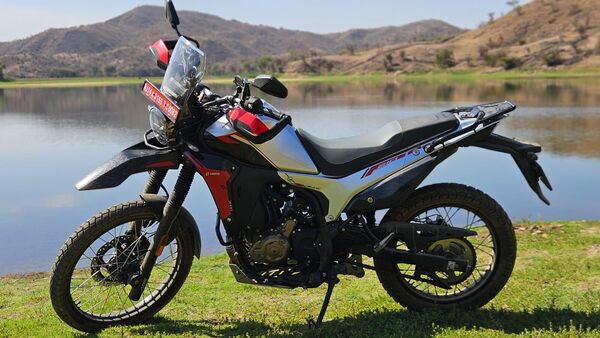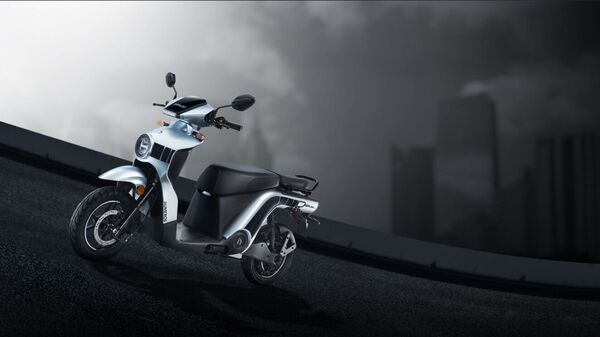
2024 Triumph Speed T4 first ride review: Cost-cut or a steal deal?
5 months ago | 5 Views
The Triumph Triumph Speed 400 set new records of pricing and quality when it arrived last year as the brand’s most accessible motorcycle globally. Built in partnership with Bajaj Auto, the Speed 400 has been well-accepted as a neo-retro roadster with its free-revving motor, fantastic fit and finish and fun chassis. However, we now have a third iteration of the Triumph 400 platform in the form of the new Speed T4. This is Triumph’s most affordable motorcycle now but promises not to be just a “cost-cut" version of the Speed 400 but to have a different character to suit the needs of a certain customer base. We sampled the new Triumph Speed T4 in Pune recently to tell you if this is indeed a different motorcycle or a more affordable option of the Speed 400.
Triumph Speed T4: Styling
Visually, the Speed T4 and Speed 400 are nearly identical. There are obvious differences including the new graphics on the fuel tank with bolder ‘400’ lettering, while the side panel gets the ‘Speed T4’ stickered instead of the badging on the Speed 400. The paint quality as well as fit and finish levels remain the same, which is something we liked on the 400 and are happy to see it being carried over here too. There are three new paint schemes - Racing Red, Pearl Metallic White, and Phantom Black.
Triumph has also worked on improving the road presence on the T4, which was a concern on the Speed 400. Both bikes are now taller thanks to the more rounded rear tyre, while the seat height has also gone up marginally. The pillion seat also gets 10 mm thicker foam for added comfort. The T4 gets a ribbed pattern on the seat, which gives it a different look from the 400. The rest of the components remain the same including the semi-digital instrument console, which continues to come without Bluetooth connectivity, not that we are complaining.
Triumph Speed T4: How is it so affordable?
The new Triumph Speed T4 is based on the Speed 400, so the resemblance isn’t uncanny but deliberate. However, the T4 is a healthy ₹23,000 cheaper than the 2025 Speed 400 launched recently. For starters, the Speed T4 isn’t all that more affordable compared to the original introductory price of ₹2.24 lakh (ex-showroom). That’s a delta of ₹7,000. However, the Speed 400 was never profitable to the brand at that price. It’s now come to a more sustainable price of ₹2.40 lakh (ex-showroom), which increases the delta between both models to ₹23,000.
So cost-cut then? Not entirely. You see the Triumph Speed T4 manages to retain all the major cycle parts from the Speed 400 but also replaces several components for more cost-effective alternatives. The gold-finished USD front forks have been replaced with 43 mm telescopic forks, while the rear gets a monoshock but with new internals. Several aluminium parts have been replaced with steel ones including the hydroformed handlebar, brake pedal, footpegs, and headlight holder bracket. Braking components have also been altered with the use of organic brake pads instead of sintered ones as on the Speed 400.
The Speed T4 also goes more basic in terms of equipment with a manual throttle body instead of ride-by-wire, which means it also misses out on traction control and an immobiliser. Triumph has opted for the more affordable MRF Zappers instead of the premium Vredestiens now available on the Speed 400. That said, the rear tyre has a wider aspect ratio, which gives it a more rounded profile allowing for more presence at the rear.
The new tyre and suspension setup has also brought a slightly longer wheelbase by 30 mm. The ground clearance has also gone up to 170 mm. With the intent to retain the sportiness of the Speed family, the T4 gets a reduced rake from 24.6 to 24.2 degrees. The trail has also been reduced by 25 mm to 78 mm. Compared to the Speed 400, the new T4 is about 1 kg heavier overall at 180 kg (kerb).
Triumph Speed T4: Performance
The hybrid perimeter tubular steel frame remains the same on the Triumph Speed T4 and so does the liquid-cooled motor. However, that’s where you will see the biggest change. Triumph says it was looking for a different character with the T4 addressing the customer base, who didn’t want a fast motorcycle but one that with a more relaxed demeanour. Think of it as the Royal Enfield Classic 350 customer with a more relaxed riding experience.
The Speed T4 then drops its power figures in favour of a more torque-friendly setup. It also gets a shorter rear sprocket down from 43 to 39 teeth. The 398 cc single-cylinder engine remains the same but gets new internals including the camshaft, cam timing, air filter and revised intake components. The motor now produces 30.6 bhp and 36 Nm of peak torque, 9 bhp and 1 Nm less than the Speed 400. But this isn’t just a drop in power, instead, the motor has a completely different character.
The Speed 400 was always designed as a rev-friendly offering with more focus at higher speeds. Triumph turns the bottle upside down with this one with a higher torque output at the lower end. The engine inertia has been increased by 30 per cent at the crank, which makes the motorcycle torquier at lower speeds. This is, I feel, closer to Triumph’s bigger neo-retro motorcycles like the Street Twin and Speed Twin, which were always about strong low-end power delivery.
This is why the Speed T4 feels closer to its roots with the more tractable motor. The engine has a lot of grunt at lower speeds and a much more relaxed output when compared to the Speed 400. You aren’t chasing a top speed constantly but will find puttering the city more casually with minimal effort. The engine has seen its tractability improve dramatically in the new setup over the Speed 400. It pulls cleanly from 60 kmph in sixth gear to 140 kmph, while a strong mid-range ensures there’s always power across the rev-range to help you navigate through traffic snarls without too many gear changes.
What’s impressive is the fact Triumph and Bajaj have not sacrificed top-end power delivery in favour of a torque-friendly motor. While official numbers suggest that the top speed has gone down from 145 kmph to 135 kmph on the Speed T4, there’s still plenty of room in the power band to keep you happy at high speeds. The engine sits more calmly now at 100 kmph at just over 5,400 rpm, while the sweet spot on the highway is anything between 110-120 kmph at just under 6,000 rpm.
You do feel mild vibrations around the 4,000 mark and then again over 6,000 but nothing that feels out of place. Triumph has also revised the exhaust on the Speed T4 and while it doesn’t replicate a certain thump, there is a nice bassy rumble, which gives the engine and the bike its own identity. Does it feel as fast as the Speed 400? No, but that’s the point. Triumph also says the T4 is more fuel efficient returning a claimed 30 kmpl, 4 kmpl more than the Speed 400.
Triumph Speed T4: Handling & Ride Quality
The step down on the suspension setup has its effects, especially when you want to go fast. The front isn’t as sure-footed on the T4 and there is a visible lack of absorption with the front forks when hitting a hard-edged pothole. Riding the Speed 400 and T4 back-to-back makes the difference very evident. The rear also feels sharper around undulations and tends to rebound rather quickly at high speeds. The setup works best at speeds under 60-70 kmph, which is where most folks will be riding in the city. However, a bad patch on the highway at high speeds will feel a tad uncomfortable.
Handling remains likeable on the T4 if not as sharp as the Speed 400. The bike retains agility and manoeuvrability, which makes it a breeze to ride on city roads. The roadster is nimble with the weight evenly distributed and is easy to handle. Despite the longer wheelbase, it still retains the agility thanks to the revised rake and trail, which make it an entertaining machine despite the power drop.
Triumph Speed T4: Braking
Braking has seen a change with the new organic pads, which take more effort to bring the bike to a stop under hard braking. If possible, switching to sintered on the Speed T4 would simply make that experience a whole lot better in our opinion. The bike gets dual-channel ABS that works well, while the absence of traction control is felt especially at the price point. Triumph could take a leaf out of Bajaj’s handbook here on how to do simpler systems with a rudimentary traction control unit doing the trick.
Triumph Speed T4: Verdict
The new Speed T4 could’ve been too much of a cost-cut version if had not been for the revised engine. It brings a new flavour to the motorcycle, showing more possibilities of what can be done with Triumph’s 400 platform. Priced at ₹2.17 lakh (ex-showroom), it's still a premium offering when weighed against the equipment on offer. A delectable price would’ve been at ₹2.10 lakh (ex-showroom), which would’ve made the T4 more promising against the RE Classic 350, Hero Mavrick 440, and more. It could even come closer to snatching some volumes from the Royal Enfield Hunter 350.
Nevertheless, the Triumph Speed T4 is for those who liked the Speed 400 for its good looks and rideability but wanted something more relaxed. The T4 then shines bright with its usability which will impress many. The most affordable Triumph is also now the easier to ride. If that is something you are looking for? Go take a test ride.
Read Also: Auto recap, Sept 29: Triumph Speed T4 review, Nissan Magnite facelift bookings open
HOW DID YOU LIKE THIS ARTICLE? CHOOSE YOUR EMOTICON !





















